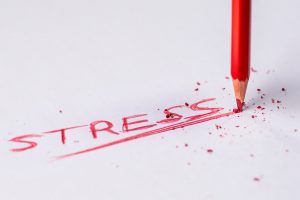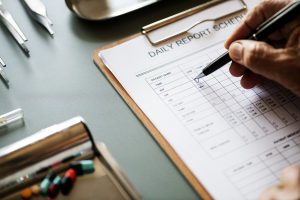In your circulatory system, blood pressure is the force of blood moving through your veins. It carries oxygen-rich cells to all parts of your body.
When you get your blood pressure checked, they are measuring how hard the blood is pushing against the wall of the arteries when your heart is beating, and when it is resting in between beats. But did you know that one in three American adults has high blood pressure, which doctors call hypertension? This puts affected adults at risk for a stroke or heart disease, which are among the leading causes of U.S.deaths.
To make matters worse, hypertension has been linked to dementia. Recent research shows a cognitive decline with dementia is higher in people in their 30s and 40s paired with hypertension.

Having high blood pressure this early in life continuously creates blood vessel damage in the brain. These are typically called white matter lesions. If enough nerve cells are damaged by high blood pressure, then memory cannot be restored.
Blood Flow in the Brain
The brain typically receives about 20% of the body’s blood supply, which carries oxygen, glucose, and other nutrients to give it energy. If this blood flow is blocked somehow or reduced, such as with high blood pressure, the brain is damaged.
One study found that even just slightly higher blood pressure (which is 120/80) could increase the risk of dementia. While another study found that women in their 40s with high blood pressure were 73% more likely to develop dementia than those who did not have hypertension. But now there is a risk of overall cognitive decline, including memory and processing speeds.
What Recent Studies Suggest
In a study published in The Lancet Neurology, a team checked the blood pressure of over 500 participants that ranged from the ages of 36 to 69 years old. None of the participants had dementia. The results showed that people between 36 and 43, and 43 to 53 had a greater than normal increase in blood pressure and a smaller brain volume later in life.
People who had higher blood pressure in their 30s and 40s had a 7-15% increase in white matter lesions in their brains.
“We found that higher and rising blood pressure between the ages of 36 and 53 had the strongest associations with smaller brain volume and increases in white matter brain lesions in later life,” he continues. “We speculate that these changes may, over time, result in a decline in brain function, for example, impairments in thinking and behavior, so making the case for targeting blood pressure in mid-life, if not earlier.”
Can You Lower Your Chances Of Cognitive Decline?
Well, as far as the clinical trials say, there is no medical proof showing that controlling high blood pressure through drugs or lifestyle changes can prevent the decline in cognition or dementia.

However, the landmark Systolic Blood Pressure Intervention Trial (SPRINT), which included 9,300 participants, ended in 2015 with a positive finding about blood pressure control and heart health: Lowering systolic blood pressure to less than 120 (which is below the hypertension threshold of 140) significantly reduced the number of deaths and cardiovascular events, such as heart attack and stroke, in nondiabetic adults age 50 and older. Similar results were found for about 2,600 participants aged 75 and older.
What You Can Do
Although there has been some skepticism on if you can do anything to lower your chances of dementia, it is important to get your blood pressure down. Hypertension is not good for your brain, heart, and body, in general. You can still lower your chances of a stroke, heart disease, and more by following these guidelines:
- Diet– Your diet plays a major role. Make sure to eat things with lower salt and sodium. Sodium intake should not exceed 1,500 mg a day. Reduce, and cut out processed foods altogether, and instead eat as many vegetables, whole grains, fruits, and fish that you can.
- Exercise– Exercise can lower your blood pressure. Try to walk at least 30 minutes a day, and other moderate exercises. Keeping your weight down can help drop points in your blood pressure.
- Limit Nonsteroidal anti-inflammatory drugs- Using ibuprofen, and other NSAIDs can raise blood pressure, especially in older people.

